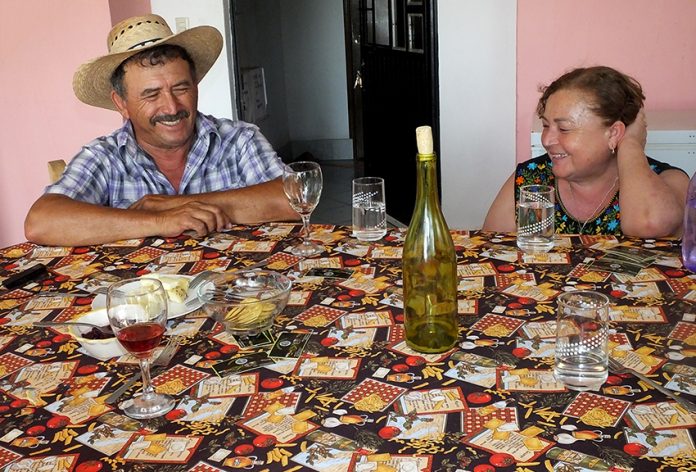While more and more foreigners are flocking to Lake Chapala’s north shore, the south side of the lake has caught the fancy of grape growers. Seven vineyards have appeared on the lake’s southern shore over the last few years, and two of them, Viñedos El Tejón and Finca La Estremancia, now accept visitors.
This entire viticulture frenzy, it seems, started thanks to the expertise and enthusiasm of just one man: Serapio Ruiz Rivera. Don Serapio started trying to grow grapes here 25 years ago when many claimed it was impossible.
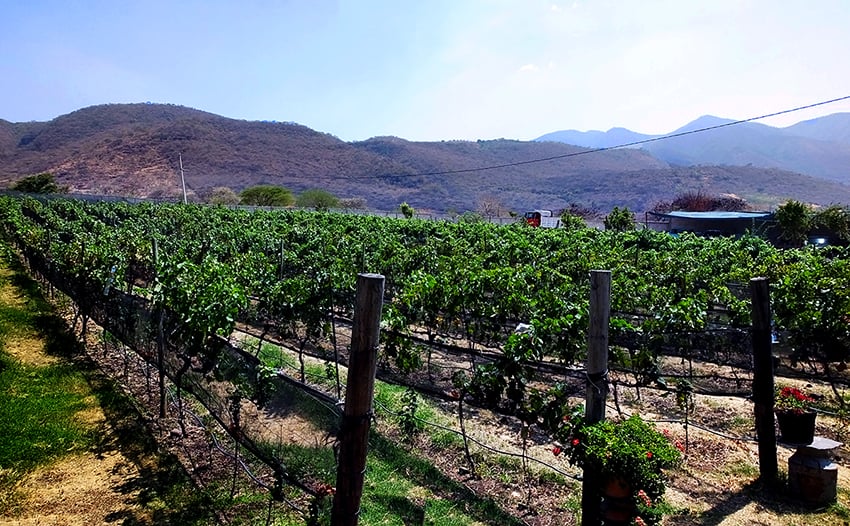
I recently found myself on the south shore, headed for what may be the most curious place on the whole lake: Igloo Kokolo, an environmental education center that looks more like a Smurf village than anything else.
While passing through the little town of San Luís Soyatlán, located 11 kilometers directly south of Ajijic, my friends and I decided to try making a Mexican-style surprise visit to Don Serapio and his wife Lupita at the El Tejón vineyard.
Just finding El Tejón turned out to be an adventure. We expected Google Maps to take us right there; what we didn’t expect was to suddenly find ourselves on a lonely, ever-worsening dirt road, apparently in the middle of nowhere.
“Are you sure this is the way?”
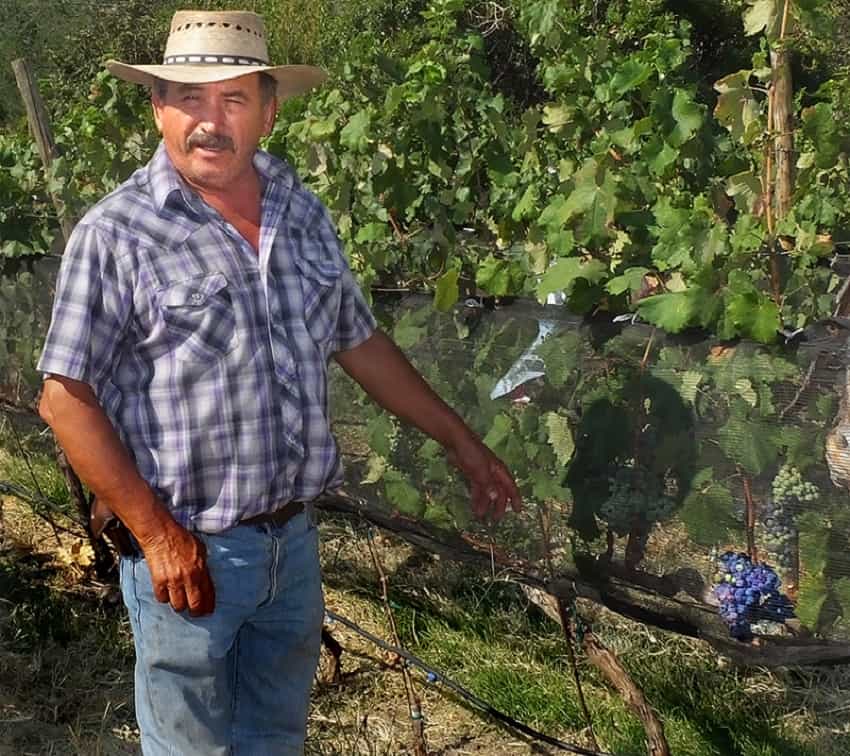
“Google Maps says so, and Google Maps is…”
“…Is sometimes drastically wrong. Do you remember the time when…?”
In this case, Google Maps’ reputation was vindicated. Suddenly, we were in front of a gate with a sign reading Viñedos el Tejón. And behind the gate, very healthy-looking grapevines stretched off as far as the eye could see.
Don Serapio was somewhere among those grapevines, working in the heat of the day, but we were welcomed into the cool patio of his home by his wife María Guadalupe Amescuader de Ruíz, known to all as Lupita. She immediately poured us a cup of their white wine.
“This is a malvasia with chardonnay,” said Lupita, “fermented with its own natural yeast. All of our wines are as close to natural as you can get. So the bottom of this bottle is cloudy because we haven’t filtered it. Instead, we clarify it with ice in the form of frozen jugs of water which we put into the vat.”
Lupita told us that her husband fell in love with grapes during the 45 years he spent working in California’s Napa Valley.
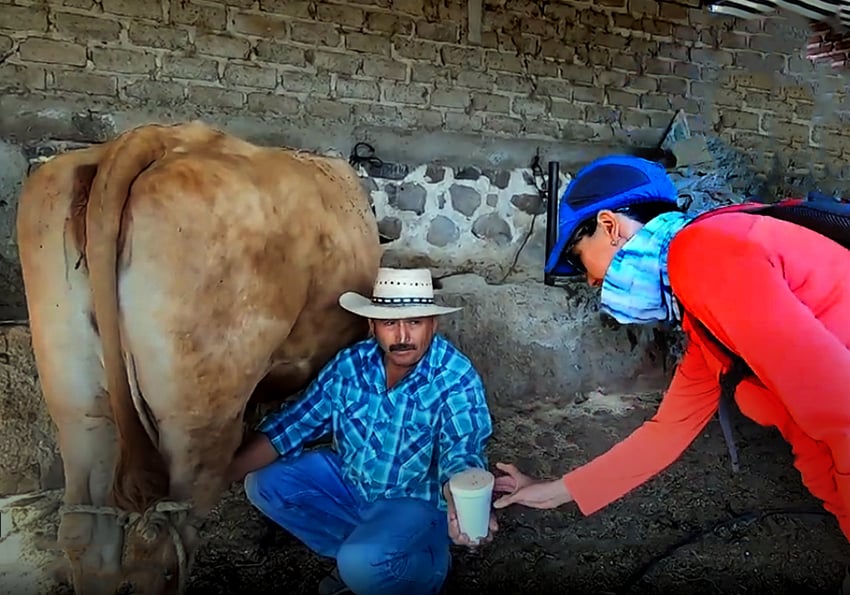
“Many people in the wine industry know my husband’s name,” she told us. “In California, Spain, France and Chile, they all know Don Serapio and his talent for grafting grapevines. From Napa Valley, we brought small vines here to see how they might do at the lakeside.”
“We brought more than 20 varieties of grapes,” Lupita said, “and now we’re growing syrah, tempranillo, cabernet, chardonnay, malvasia, sauvignon blanc, grenache, Douro, pinot noir, nebbiolo and others. Actually, we only found two or three varieties that didn’t do well because they need a colder climate.”
At this point, we were joined by Don Serapio. I took advantage to ask him how he got involved with growing grapes for wine-making.
“When I first went to California,” he told me, “I started out working with strawberries, but along came immigration, and they sent me home to Mexico. Afterward, I found my way back, and the people I was with invited me to Napa to pick pears.”
After working in Napa, Don Serapio returned to Mexico in 1978, where he married Lupita. Thinking about where they could raise their children in the U.S., they were attracted by the peace and safety Napa offered in comparison to other California cities.
Don Serapio began working in grapevine grafting in Napa, where he and his family lived for 46 years.
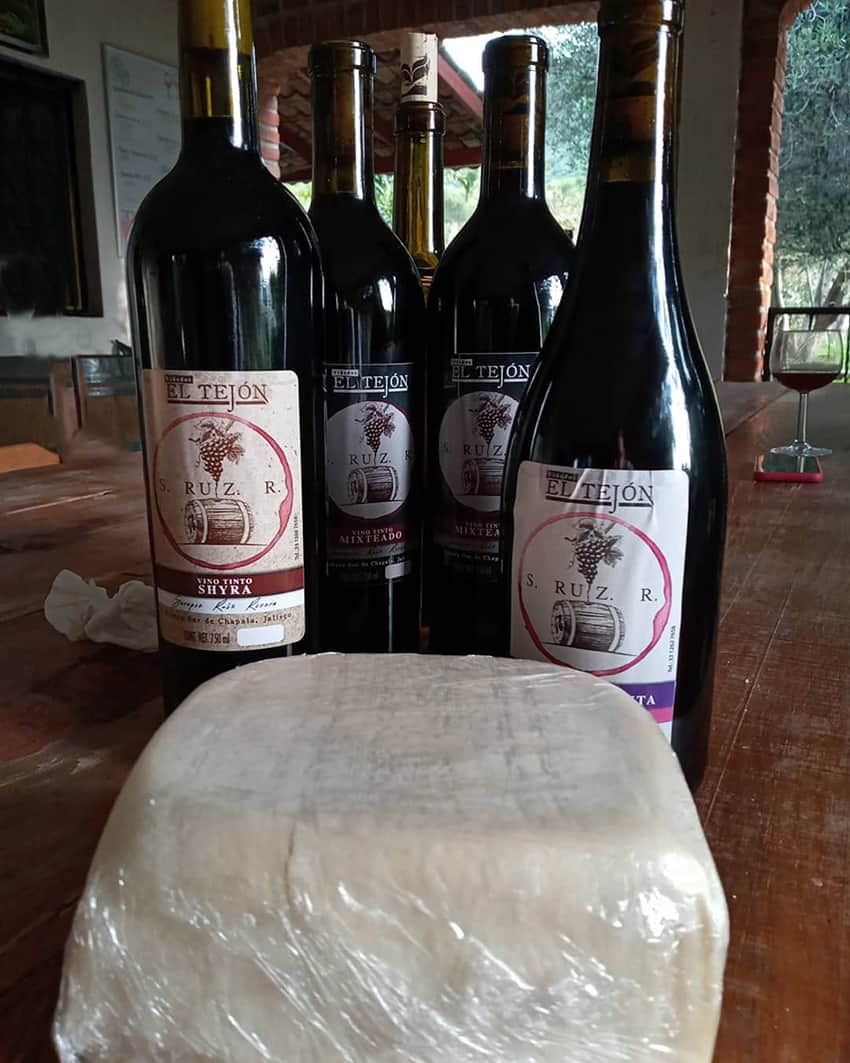
Don Serapio also told us the story of how he became the owner of Rancho El Tejón (Badger Ranch), a name that he says goes back at least 100 years:
“It was 6 a.m. A woman was sweeping the street. ‘Hey Serapio,” she says, ‘I’m glad I ran into you. Would you mind coming to graft some trees for me?’
“I said, ‘Okay, let me tie up my mule.’ So I went into her house and said, ‘OK, we have to put the scions in water so the grafts will take. Tomorrow I’ll come to see how they look, and then you can tell me where to put the grafts.’”
The next day, as Don Serapio was grafting, the woman’s phone rang. One of her brothers was calling to ask if the deal to sell El Tejón would really be going through.
No, she told him. The buyer had changed his mind.
“I said, ‘You’re selling El Tejón?’” Don Serapio recalled. He asked to speak to her brother and paid the asking price without trying to talk the seller out of a single peso.
The very same day, he became the owner of the vineyard, which happened to lie right next to land he already owned, bringing his property up to a total of about 26 hectares.
“Plenty of space to experiment with new varieties,” he said.
Curiously, in Mexico the word tejón is applied to both the real North American badger, which is mainly nocturnal and quite aggressive, and the Mexican coati, a playful, diurnal creature, said to look like a cross between a raccoon, a monkey and an anteater.
“We’ve got both kinds here on our property,” says Don Serapio, who that says both populations are rather numerous, in fact. “Rancho El Tejón is really well-named.”
- You can arrange a visit to El Tejón by calling Don Serapio at 333 492 4723 or Lupita at 331 262 7658. Both of them speak English. Ask Google Maps to take you to Viñedo El Tejón, Sinaloa, Fracc. Las Brisas, San Luis Soyatlan, Jalisco. To contact the above-mentioned Finca La Estremancia, call 331 546 4631.
